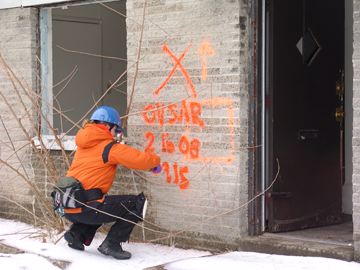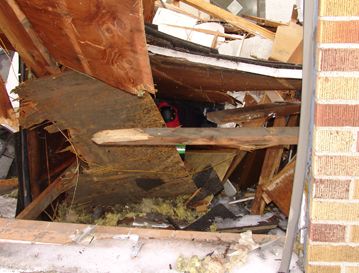Team Disaster
Training
The disaster search dog must be very
sure footed on all types of surfaces. In the mid-west, we must contend
with tornadoes, flooding and the possibility of the New Madrid fault earthquake. The scenarios differ but the reaction from the disaster dog team
(dog & handler) must be quick, definite
and reliable.
The disaster search dog training starts
at 12 to 14 weeks of age with walks on easy but varied surfaces such as
piles of broken concrete, downed trees, and objects that are unstable.
This early, but non-compulsive training builds the pups confidence and
ability to navigate through rubble. The pup can also be learning air
scent wilderness searching which carries over nicely to disaster
search training. As the skill level increases in wilderness training, the
handler can slowly add requirements to the disaster search training.
A disaster search dog needs to have
a strong, loud bark alert so
as to carry a good distance and be heard over other rescue scene noises.
The dog should stay at the scent source, barking, until the handler arrives.
The handler pinpoints and marks the victim location and then the dog is rewarded for a job well done!
Another consideration in disaster work
is for the dog to alert only on live finds. It may take hours, even days,
to dig a person out of a collapsed building, so precious time should not
be spent extricating a deceased person. When a trapped person is located
and contact has been made, either by tapping on the concrete or by voice,
the victim is not to be left. The handler, or support
person, needs to keep communicating with the victim until further
help arrives.
Man made and natural disasters are
a very real threat to our society. A well trained disaster search team,
with a short response time, often makes a difference between finding the
victim alive or deceased.





















